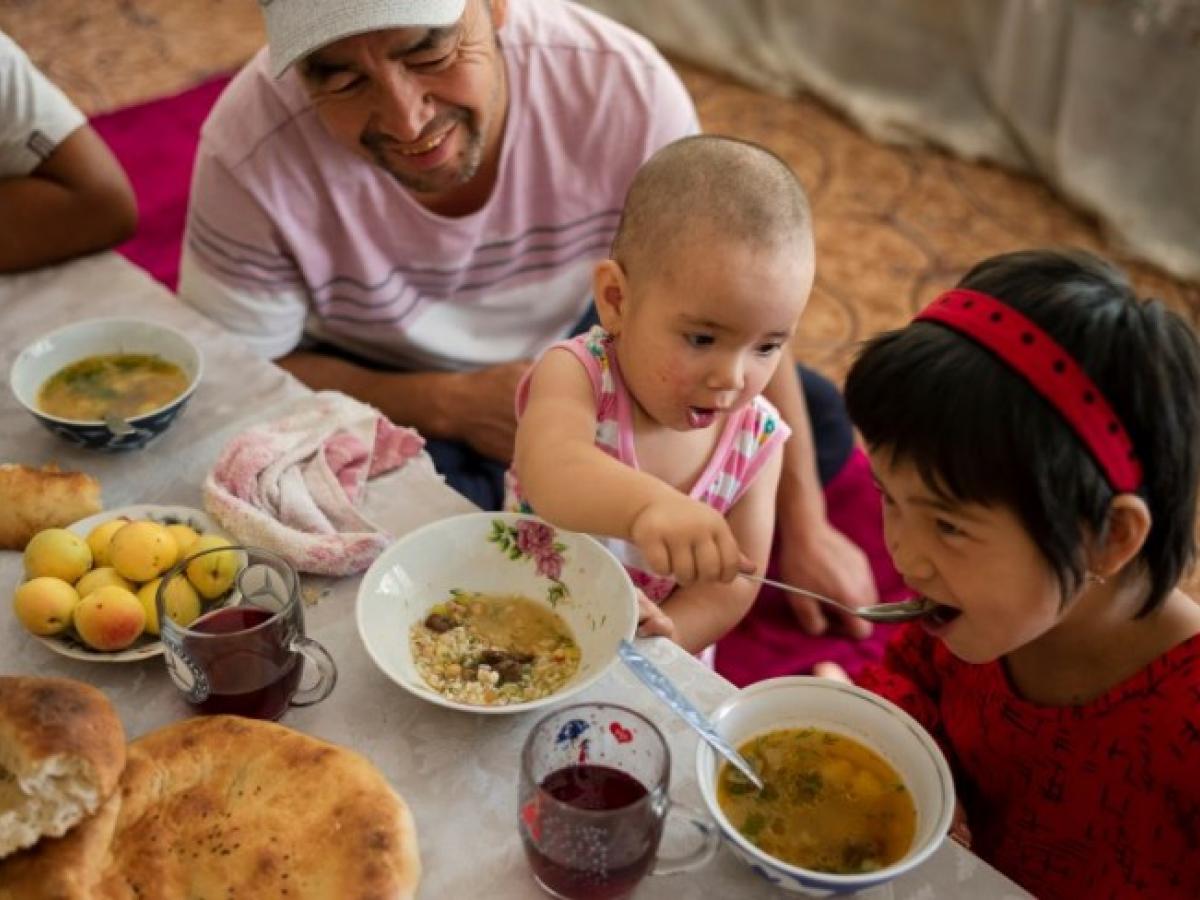For Immediate Release
Press Release
Results of the first nationwide comprehensive survey on the nutrition status of children and women in Kyrgyzstan have been presented today by the Ministry of Health
The Ministry of Health of the Kyrgyz Republic, together with UNICEF, FAO, WFP, WHO, Mercy Corps and USAID, today released the results of the National Integrated Micronutrient and Anthropometric Survey(link is external) in the Kyrgyz Republic (NIMAS) – the first large-scale study on the nutritional status of children and women ever conducted in Kyrgyzstan. A total of 3,452 households were targeted and 3,062 were surveyed in all regions, with blood samples being analyzed by certified laboratories in Germany, Jordan and Tanzania. The study was designed to determine the micronutrient deficiencies and other nutrition issues that are affecting children aged 6-59 months and 5-9 years, adolescent girls aged 10-19 years, women of reproductive age 15-49 years and pregnant women, presenting the data by age groups and regions.
As per the findings of the survey, the prevalence of anemia and iron deficiency among children, adolescent girls and women, as well as folic acid deficiency among women, remain serious public health concerns. About 50 per cent of pregnant women suffer from anemia, which increases the risk of maternal and neonatal death. Iron deficiency affects 47 per cent of children from 6 months to 5 years of age, which can negatively affect their physical and intellectual development. Vast majority of women and adolescent girls, 86 per cent, suffer from a folic acid deficiency. Folic acid deficiency in future mother can lead to various malformations of the brain and spinal cord in the fetus.
Nationally, 44 per cent of women suffer from obesity and overweight and more than half have insufficient levels of vitamin D.
According to data collected, a large number of households in Issyk-Kul, Naryn and Chui regions experience food insecurity, mainly caused by poverty.
On the positive side, the NIMAS concludes that the salt iodization programme is functioning well as iodine status was found adequate among adolescent girls, non-pregnant women and pregnant women.
The fieldwork for the survey involved nine teams of 110 field workers who had to fill out questionnaires, measure height and weight, and take samples of salt and flour from households; health workers were also tasked to collect blood and urine samples.
Salt and Flour samples have been also analyzed to check if these products are adequately fortified in line with national regulations. Iodized salt is being used by 98 per cent of the population, however, flour was not adequately fortified in line with national standards. Salt and flour fortification are easy and cheap methods to prevent micronutrient deficiencies.
The survey samples were sent to internationally certified laboratories, such as VitMin Lab in Germany, BioLab in Jordan, and the Tanzanian Food and Nutrition Center. All salt and flour samples were analyzed in Kyrgyzstan by the Department for Disease Prevention and State Sanitary and Epidemiological Surveillance under the Ministry of Health. The total cost of the study was 545,000 US dollars.
The study was conducted with UNICEF technical assistance as part of the implementation of the State Programme for the Protection of Public Health and the Development of the Healthcare System for 2019–2030, "A healthy person is a prosperous country" and the State Program for Food Security and Nutrition for 2019–2023. The work was supported by This research will help shape the nutrition and health policies needed to improve the health status of the country.
Note for editors:
This study on the nutritional status of children and women (National Integrated Micronutrient and Anthropometric Survey in the Kyrgyz Republic) was conducted by the Ministry of Health of the Kyrgyz Republic with the support of the United Nations Children's Fund (UNICEF), the Food and Agriculture Organization of the United Nations (FAO), the United Nations World Food Program (WFP), World Health Organization (WHO), Mercy Corps, United States Department of Agriculture (USDA) and the United States Agency for International Development (USAID).
___
Read the research snapshot here(link is external).

